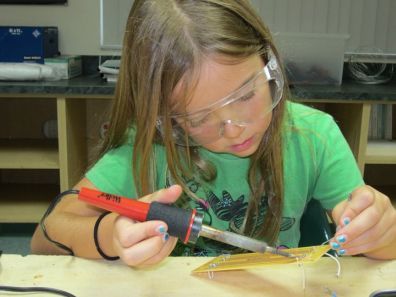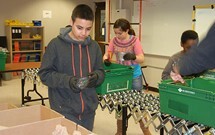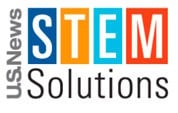Gamification can improve learning speed and retention
This book, Playing to Win: Gamification and Serious Games in Organizational Learning by ASTD Research, claims to be the result of rigorous research into the value of gamification as an aid to learning. Gamification, for those of you for whom the word isn’t instantly definable, is the use of games in a non-game context to engage and encourage users to solve problems. It's a new paradigm in learning made more possible by recent technological advancements.
The book’s author, ASTD Research, is introduced by Wikipedia as “The Association for Talent Development (ATD), formerly American Society for Training & Development (ASTD)... a non-profit association for workplace learning and performance professionals.” It was formed in 1944. On its website ASTD claims the following for its research: “... an empirical foundation for today's data-driven decision-makers, containing both quantitative and qualitative analysis about organizational learning, human capital management, training, and performance.”
- 0 Comments
- Jul 31, 2014 12:00:00 PM
- Posted by Mike Nardine
- Topics: 21st Century Classroom
california schools embrace blended classrooms

Oakland CA schools have a problem trying to teach their academically diverse student body. Kilian Betlach, the principal of Oakland’s Elmhurst Community Prep says that while one third of Elmhurst’s kids are at grade level in reading and math, the remaining two thirds are from one to four years behind. No doubt Principal Betlach’s school shares the same problem with many inner-city, high-poverty middle schools.
The question of how best to address this problem is complicated by lack of staff and lack of funds -- another common problem with inner-city schools. With too few teachers, how can they keep the slower learners from falling farther behind without denying faster learners the time they deserve and thereby cheating them all of a decent education? Unfortunately the answer to this problem is not to be found in the old factory model of education most of us grew up with.
- 0 Comments
- Jul 30, 2014 12:00:00 PM
- Posted by Mike Nardine
- Topics: Education Politics, 21st Century Classroom
looking for ways to interest kids in tech? 3D print their ice cream!
We’ve all heard the old saw “the quickest way to a man’s heart is through his stomach.” I can’t say I put much stock in that one, but I’ve heard that the “quickest way to get a kid’s interest is with an ice cream cone” -- I believe that one based on my own experience an impossibly long time ago.
Therefore it didn’t surprise me at all to hear that the fine institution of the Massachusetts Institute of Technology was experimenting with producing ice cream with a 3D printer in hope of drawing kids' interest to the technology. It apparently started one semester when Professor John Hart’s class in additive manufacturing printed 600 ice cream spoons. Additive manufacturing, by the way, is considered by many including President Obama to be the new revolution in manufacturing. Instead of forming things in molds or by punching, pressing and whittling them down on tool and die machines, additive manufacturing builds things up nature's way, one layer at a time.
- 0 Comments
- Jul 28, 2014 3:35:00 PM
- Posted by Mike Nardine
- Topics: 21st Century Classroom
Chevron invests in bringing more girls into STEM

Some argue against the intrusion of big business into education. Critics left and right have what they consider good reason to fear the beginning of a “slippery slope” leading us toward disaster. President Obama seems to have no such fear as in his February 12, 2013 State of the Union Speech he asked for the creation of “manufacturing hubs, where businesses will partner with the Department of Defense and Energy to turn regions left behind by globalization into global centers of high-tech jobs.”
Energy giant Chevron is forging ahead with plans to assist educators of students who will become the tech sector's skilled STEM-educated employees. In the next three years Chevron intends to invest more than 30 million dollars in STEM learning in this country. Blair Blackwell, Chevron’s manager of education and corporate programs tries to alleviate the fear of big business intrusion by admitting that “We recognize we’re not education experts. We have to partner with the education experts, with officials on the ground.”
- 0 Comments
- Jun 19, 2014 12:00:00 PM
- Posted by Mike Nardine
- Topics: STEM, National News, Education, Education Politics, 21st Century Classroom
Can skateboarding help convince kids to like math?

Teachers, are you having trouble convincing students in your STEM classes that the subject matter has relevance for their lives? Of course you are! What teacher isn’t? Luckily programs exist for this generation of hard-to-convince students that can help you. Among these is Rochester Institute of Technology’s REMS Program. Why? Well, it uses skateboards, for one thing. For those of you unfamiliar with the Rochester Institute of Technology (RIT), the school has been consistently rated 7th among regional colleges (North) by US News and World Report. It boasts that “Our outstanding faculty deliver innovative and creative programs that are enhanced by experiential education and world-class facilities.” The REMS program is proof of the truth behind that boast.
- 0 Comments
- Jun 18, 2014 12:30:00 PM
- Posted by Mike Nardine
- Topics: Education, 21st Century Classroom
2014 Educational Grant Deadlines
Educators, as you might have heard, money for school special projects is tight. But your kids still deserve the best and there is money to be had out there if you have time to do some grant writing. Some of the best ones are coming due between now and the first of the year. Check out this awesome calendar with application deadlines listed for dozens of grants!
- 0 Comments
- Jun 17, 2014 12:00:00 PM
- Posted by Mike Nardine
- Topics:
The US needs more programs to expose students to computer science
The long and the short of it is simply this: the Bureau of Labor Statistics predicts that in the next six years the demand for computer programmers will exceed the supply by at least one million. That’s one million jobs that will likely go to individuals from outside the US. These will be some of the best paying jobs around and the segment of our society that will lose the most will be women, students from rural areas, and students of color.
Why is that? Colleges across the country are flooded with requests for an education in computer science in numbers that would meet that and any future demand. Simple answer: there are not enough classes, teachers or equipment to meet that enormous demand. And there's not much chance that will change anytime soon. Colleges and universities have simply been caught flat footed after cutting back in their computer science departments.
- 0 Comments
- Jun 16, 2014 6:56:26 PM
- Posted by Mike Nardine
- Topics: National News, Education, Education Politics, Computer Science
Improving gender and ethnic diversity in STEM jobs
 As everyone in the field is well aware, women and ethnic minorities are not sufficiently represented in STEM careers and in learning programs nationwide. Increasing their participation in a field that is fast becoming an important job provider in this country was the subject of a recent “Creating a Sustainable Commitment to STEM” session at U.S. News & World Report's STEM Solutions Conference in Washington, D.C.
As everyone in the field is well aware, women and ethnic minorities are not sufficiently represented in STEM careers and in learning programs nationwide. Increasing their participation in a field that is fast becoming an important job provider in this country was the subject of a recent “Creating a Sustainable Commitment to STEM” session at U.S. News & World Report's STEM Solutions Conference in Washington, D.C.
- 0 Comments
- May 13, 2014 4:00:00 PM
- Posted by Mike Nardine
- Topics: EdTech, STEM, National News, Education, Education Politics, Student Engagement
3d printing in education in Japan
Hey! Here is some good news: the Japanese government thinks it has to play catch-up to the United States in at least one area of manufacturing technology, 3D printers. After a lifetime of hearing about the supposed superiority of Japan in all things manufacturing--I’m driving a Subaru; how about you?--it’s great at last to find something about American manufacturing worth emulating.
Even more important, it’s great to realize that we Americans are doing something right in our schools--intending to furnish every single one of them with 3D printers. The determinative word in that last phrase is “intending;” we still have a long way to go before we can claim victory.
This wonderful new technology, as President Obama said in his 2013 State of the Union speech, “... has the potential to revolutionize the way we make almost everything. The next industrial revolution in manufacturing will happen in America.” Of course the Japanese would prefer that the revolution start there!
- 0 Comments
- Apr 28, 2014 1:30:00 PM
Advanced math and reading in kindergarten benefits school performance
Just when we thought it was safe to follow the old dictum ‘just let kids be kids,’ we stumbled over this latest research from the University of Chicago in the American Educational Research Journal which indicates that only four days per month of advanced math and reading content in Kindergarten leads to better test scores in the higher grades. This study will be difficult for parents eager to get their children off to the best start to ignore.
But don’t panic, ‘advanced math and reading content’ doesn’t mean algebra and James Joyce’s Ulysses. According to Amy Claessens, assistant professor of public policy at Chicago University's Harris School of Public Policy Studies and primary author of this study, ‘advanced’ in this context simply refers to the fact that 50% of kids arriving in Kindergarten have already mastered the basic content; advanced means providing content a majority of children have not as yet mastered.

- 0 Comments
- Apr 23, 2014 6:30:00 PM
- Posted by Mike Nardine
- Topics: Math, Education, Kindergarten
Relevant Posts
Popular Posts
Subscribe to Email Updates
-
I Want To Learn MoreADDITIONAL INFORMATION



